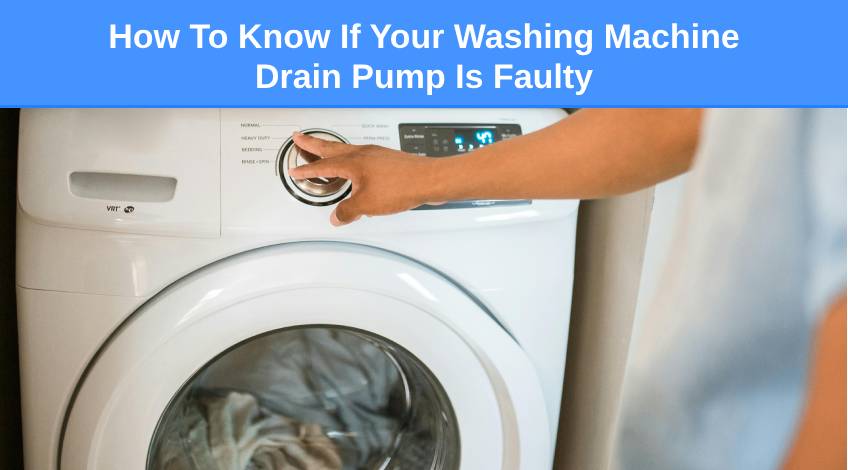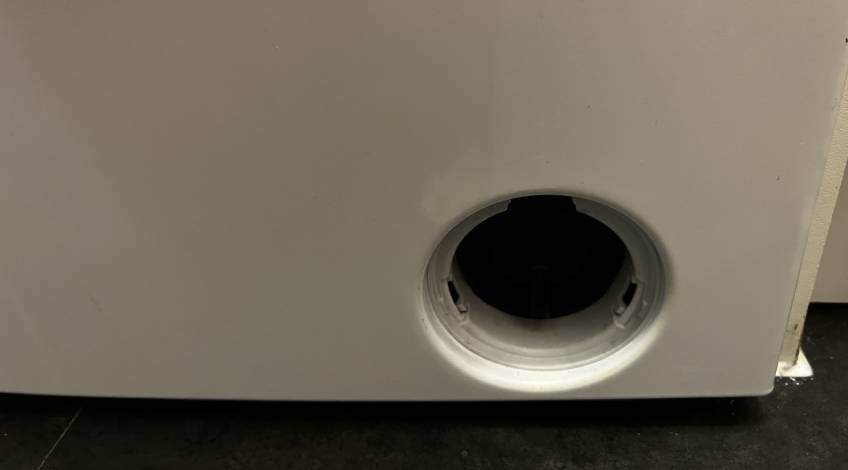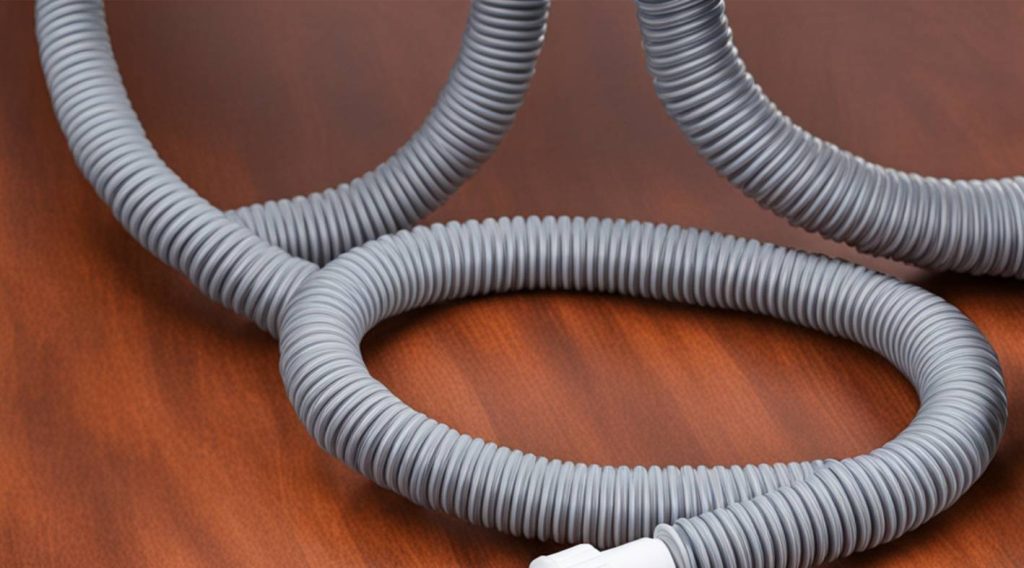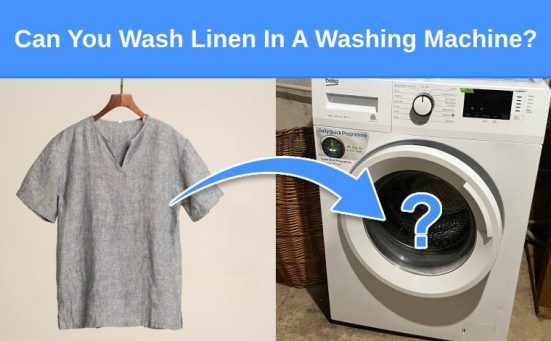
How To Know If Your Washing Machine Drain Pump Is Faulty
The function of the drain pump on a washing machine is to force wastewater from the machine. If the drain pump in your washer has gone bad, or fails to work, you will be left with a drum full of dirty water and soaking wet laundry.
Added to which, the door on your washing machine won’t open either, to prevent your home from flooding. If you suspect the drain pump on your appliance has become defective, keep reading to find out how to be sure it is actually the drain pump that’s causing the problem.
What Are The Signs Of A Malfunctioning Drain Pump?
There are four distinctive signs of a bad washing machine drain pump which are;
- Washing machine stops mid cycle with a full drum of water
- Washing machine doesn’t spin
- Remaining water in the drum doesn’t drain away
- Washing machine won’t drain at all
You should also check for any error codes as often washing machines will self diagnose and display an error code which will signify where a problem is located. For instance, on LG washing machines the OE error code can signify that the drain pump has malfunctioned.
If the washer is full of water that won’t drain away, you will need to deal with this first before attempting to investigate the drain pump.
How To Drain A Washing Machine

If the washing machine won’t drain the wastewater from the drum you will need to find another way to drain it. The only sure fire way to drain the washer until you know what the problem is, is to drain it through the filter.
You will need to place a shallow tray or dish on the floor in front of the filter housing and then open the filter just enough to allow water to flow through it. Once the container is full, close the filter and empty the container.
Repeat this process until all of the water has been removed from the drum. Or, you can take the drain hose out of the standpipe and lower it into a bucket or bowl, if the water flows freely from the hose once lowered, you can be almost certain that the drain pump is the problem.
Once the bowl or bucket fills, simply raise the hose to stop the flow. Empty the container and repeat until all of the water has been drained from the appliance.
How To Check If It Is The Drain Pump That’s Faulty

As the symptoms of a bad drain pump could also be symptoms of other issues, you will need to rule out these other problems first. They include;
Clogged Filter
The drain filter on a washing machine is designed to trap any foreign objects that could clog the drain pump and prevent it from working properly. A blocked drain filter would lead to exactly the same symptoms as a bad drain pump which is why this needs ruling out first.
Consult your user manual for the location of the drain filter on your appliance and carefully remove it, ensuring that you drain all the water away before fully removing the filter (see above). Once the filter has been successfully removed, clean it under a fast running tap to remove any dirt, lint, or other foreign bodies that might be causing a blockage.
Check The Pump Impeller
Whilst the filter is out, turn the impeller using a finger to check that it turns freely. The impeller is located inside the filter housing and can be reached by putting one finger inside the housing towards the top.
If the impeller turns freely with no resistance, the pump is probably not the cause of the problem but you can’t take this as proof because the impeller could have a damaged or missing blade.
Twisted Or Clogged Drain Hose

All of the wastewater from the washer runs out through the drain hose. If the drain hose is twisted, kinked or blocked, the wastewater cannot flow properly which could cause the same symptoms as a bad drain pump.
You will need to check the drain hose for any twists or kinks and straighten them. If this doesn’t do the trick, there could be a blockage in the drain hose somewhere.
The best way to tackle this is using a plumber’s snake which should be pushed into the drain hose and can be used to hook any blockage out.
Blockage In Waste Pipe
If your washing machine is connected to the waste pipe under the sink, this could be where any blockage might be. Sink drains can get clogged with grease, fat, soap residue and food waste.
To check the sink drain for blockages simply run a tap and observe how fast (or slowly) the water drains away. If it takes a longer than normal time to drain, or it doesn’t drain away at all, it will need some help.
You can clear an under the sink blockage using a plunger, plumber’s snake or a commercial drain cleaner.
If none of the above solves the issue, then it’s likely that the drain pump is defective. If you are DIY minded it is possible to remove the drain pump, investigate and replace it if necessary.
However, this job does involve dismantling parts of the appliance which is why I recommend getting a technician to do this for you. If you decide you’d like to attempt replacing the drain pump yourself, just follow the tips in this video;
If you don’t feel this job is within your skill level, contact a technician to do it for you.
Ways To Prolong The Life Of A Washing Machine Drain Pump
There are a few things that you can do to help prolong the life of your washing machine’s drain pump these include;
- Always check the pockets of clothes for any loose items like screws, nails, coins, hair clips etc and remove them
- Run a hot service wash at least once a month to prevent the buildup of dirt, debris, detergent residue or limescale
- Clean the drain filter at least once every two months to prevent it becoming clogged
- Check that the drain hose isn’t twisted or kinked every two weeks or so
By sticking to these guidelines, you can preserve the life of your washer’s drain pump and help to prevent any unexpected problems.
SEE ALSO: What Height Can A Washing Machine Pump Water?
Frequently Asked Questions
You can know whether the drain pump on your washing machine is bad if the water doesn’t leave the machine at the end of the cycle but will drain through the drain filter, if the drain cycle takes far longer than normal or if the pump makes more noise than normal.
If your washing machine drain pump isn’t draining it could be because the filter is clogged, the drain hose is twisted, kinked or blocked, the waste pipe connected to the washer under the sink is clogged or the drain pump has developed a fault.
You should clean the drain filter on your washing machine at least once every two months to keep your washer running smoothly and ensure your clothes get cleaned properly.




